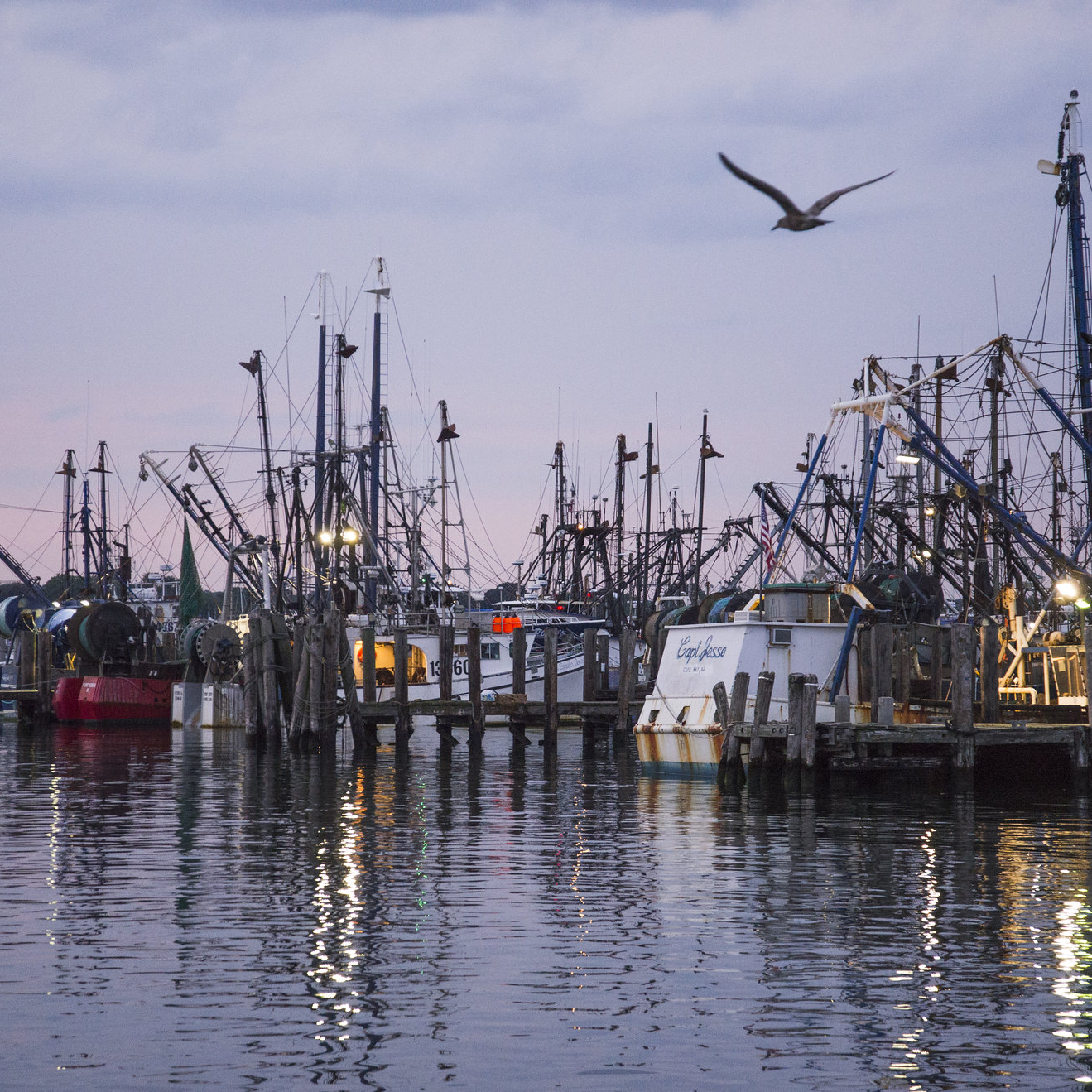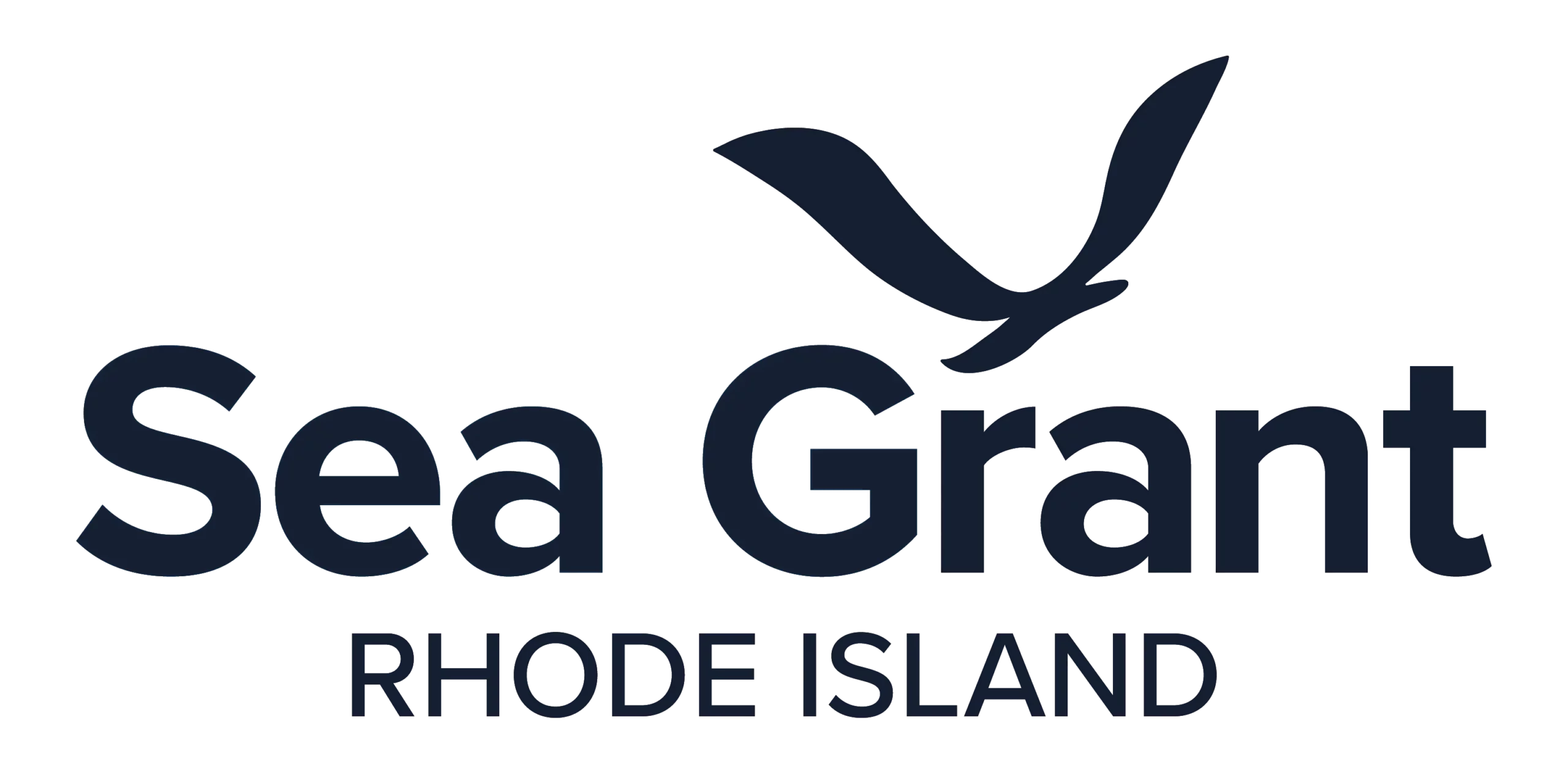Blue & You explores the intersection of climate risk, infrastructure, and opportunity along our working waterfronts.

WATERSON TERMINAL SERVICES,LLC, the operating company of ProvPort | COURTESY PROVPORT INC. | PBN News
Rhode Island’s ports have long been engines of commerce and community along Narragansett Bay—but as seas rise and storms intensify, these waterfronts face growing risks that demand coordinated adaptation and innovation.
That challenge was the focus of Blue & You: Ports and Sea Level Rise, held October 15 at Save The Bay’s headquarters in Providence. This event was co-hosted by the Innovate Newport/Greater Newport Chamber of Commerce, 401 Tech Bridge/Polaris MEP/the URI Research Foundation, and supported by Rhode Island Sea Grant.
The panel–moderated by Meredith Haas of Rhode Island Sea Grant–included Austin Becker, professor of Marine Affairs at the University of Rhode Island; Chris Waterson, CEO of Waterson Terminal Services/ProvPort; Ted Williams, President of Senesco Marine in Quonset; and Josh Humberston, CEO of Coastal Measures.
Understanding Risks & Adapting
Becker, whose research focuses on coastal and port resilience, outlined the growing risks that sea-level rise and storm surge pose to Rhode Island’s ports—from Providence’s industrial waterfront to Quonset and Galilee.
“There’s pretty good agreement in the scientific community that we’re looking at around one foot to a foot and a half of sea-level rise by 2050,” he said, noting that impacts will vary depending on local infrastructure, geography, and compounding factors such as heavier rainfall and stronger storms. “What’s now a once-in-a-century flooding event could become an annual occurrence by the end of the century.”
He pointed to Providence’s vulnerability at the head of Narragansett Bay, where storm surge could funnel twenty miles inland, compounded by runoff from the north. Becker added that while Quonset’s Port of Davisville is more planned and structured, it too faces risks from sea-level rise and storm surge. As a primarily car-handling port, it may have greater flexibility to relocate assets, whereas Galilee—the state’s principal fishing port—remains highly exposed even under moderate storm scenarios.
“DEM has invested in elevating certain parts of the port,” Becker said. “It’s a big part of the economy, and it’s difficult to say where that will go in the future as sea level continues to rise.”

Commercial fishing vessels dock at the Port of Galilee
He described how his team is developing tools, such as STORMTOOLS, Infrastructure Resilience Planning Framework, and RICHAMP, to help decision makers—port managers, municipal planners, and emergency managers—better understand and prepare for these risks.
“We’ve been developing tools that help decision makers better understand what the impacts of big storm events and sea level rise would be for the things they care about,” Becker explained. “These decision-support tools let them see how a given storm might actually affect their infrastructure so they can take the steps they need to reduce that risk.”
That focus on preparedness was echoed by Humberston, who emphasized the value of real-time data and sensor networks.
“AI can fuse multiple sensors and models to predict what will happen at a specific site—but it only works if the sensors are there first,” he said, adding that investing early “can be the difference between being reactive and being ready.”
Ports on the Frontline
Preparing for sea-level rise at the Port of Providence means balancing daily operations with long-term planning, says Waterson. “It’s hard for policymakers to think 15, 20, 30 years out—it’s just as hard for business operators. Most of the time, your head’s in the next week or next month,” he said, noting that early hurricane plans were simple–get everything as high as possible and get out.
After working with Becker’s team, the port now has a 30-year Master Plan that takes a more strategic approach, utilizing resilience modeling to guide upgrades to its century-old infrastructure. “Working with Austin’s team, we learned something surprising: whether the hurricane barrier is open or closed, we’d be in about the same situation. That took one anxiety off the table, but there’s still a lot to figure out.”
Waterson noted that new projects are exploring different options, such as the one in East Providence, which is testing the beneficial reuse of dredge material by mixing it with cement and aggregates to create fill for elevating sites.
“We’re dumping dredge offshore or in landfills,” Waterson said. “It could instead shore up critical coastal infrastructure across the state.”
Becker noted that elevation will be a key adaptation strategy. “Every coastal area will need to consider protection, retreat, or elevation,” he said. “Developing technologies that support that could be an economic opportunity for Rhode Island.”
For Senesco’s shipbuilding operations at Quonset, Williams said they are contending with challenges daily, as aging infrastructure is not equipped to handle current and anticipated climate conditions.
“Even 15 to 20 knots from the south can have major impacts,” he said, noting the shipyard’s 1,200-foot pier, built in 1941, is in disrepair. For now, contingency plans include moving vessels behind New Bedford’s hurricane barrier during major storms. “It depends entirely on the wind and what’s coming our way,” said Williams.

Port of Davisville | Courtesy Oceantic Network
Decarbonization and Dual Pressures
As ports adapt to rising seas and stronger storms, the maritime industry faces another challenge: decarbonization. The International Maritime Organization has set a goal of achieving net-zero emissions in global shipping by 2050—requiring sweeping changes to vessels, onshore infrastructure, and energy systems.
At the Port of Providence, most ships aren’t yet equipped to plug into shore power, and there are risks to retrofitting older facilities.
“If we installed shore-power hookups at their current elevation—just four or five feet above high tide—we’d risk flooding multi-million-dollar equipment several times a year,” said Waterson. “We’re exploring ways to elevate systems or use portable units, but any solution must match the diversity of vessels we serve.”
The port’s master plan includes mapping emissions and electrifying equipment, though funding remains a barrier despite recent Clean Ports grant efforts.
Williams said they are already building the first hybrid-propelled and the first fully electric ferries ever constructed in New England.
“Ferries are ideal because they run repeatable routes and can plug in at the same docks, but broader electrification is still limited by battery capacity and domestic supply.”
Becker noted that adaptation and decarbonization are “two different problems to solve,” though increasingly interconnected, and will reshape the future of our coasts.”
Building the Workforce for a Changing Coast
The U.S. maritime workforce is shrinking, with academy enrollment down 20–30% in the past decade, according to the U.S. Maritime Administration—a trend that poses both a challenge and an opportunity for Rhode Island’s port-driven Blue Economy.
Coastal adaptation is going to be an exploding job market over the next couple of decades.
Williams says he feels the decline as he and other companies like Electric Boat compete from an ever-shrinking pool.
“We’re drawing from the same limited pool,” he said. “And as we move toward hybrid and electric vessels, maritime electricians are even harder to find—that’s a skill set we urgently need to grow.”
At the Port of Providence, workforce planning is now integral to the port’s long-term strategy.
“Not many people who live near the port also work there,” he said. “We’re trying to change that—working with the city and state on training programs and creating pathways to good-paying jobs that are accessible by transit or even on foot.”
The port’s shift toward offshore wind has already transformed the skills required on the docks. Longshoremen, once unloading vehicles, are now handling massive turbine components, while diesel mechanics are retraining to service electric motors.
Becker said such transitions point to an emerging growth market.
“Coastal adaptation is going to be an exploding job market over the next couple of decades,” he said. “We’ll need planners, engineers, communicators, and permitting experts—and we’re already building programs at URI to help train the next generation.”
He and Humberston emphasized exposing young people early to the full range of maritime careers—both traditional and digital.
“There are hundreds of companies in the marine data industry alone,” Humberston said. “If students get that early exposure, some will realize this is their path—they just never knew it existed.”
As Rhode Island prepares for sea-level rise, clean energy, and new technologies, panelists agreed that investing in people will be as critical as investing in infrastructure—ensuring that the state’s working waterfronts remain resilient and future-ready.
Barriers & Next Steps
In closing, panelists reflected on the biggest challenges facing Rhode Island’s working waterfronts.
Becker pointed to the difficulty of maintaining decision-support tools like STORMTOOLS and RI-CHAMP once initial research grants expire.
“We can get funding to build these systems, but not to sustain them,” he said. “If we want them to truly serve the public, we need consistent, long-term support.”
For Humberston, the issue is less about funding and more about consistency.
“As a company focused on environmental observation, we’re constantly adapting our language to shifting narratives about what’s ‘climate-relevant’ or ‘infrastructure-relevant,’” he said. “We need more standardization so people can get to work on the problems, not the politics.”
Williams underscored the strain of aging infrastructure at Senesco Marine, where a 1,200-foot World War II-era pier is now unsafe for repair work.
“We have world-class shipbuilders ready to work, but we can’t use our dry docks until that pier is rebuilt,” he said.
For Waterson, the challenge is timing.
“You can get funding after a disaster—it’s much harder to secure it before,” he said. “We need to shift toward proactive investment and use resources like dredge material to strengthen infrastructure before the next storm.”
All agreed: long-term resilience depends on sustained investment in infrastructure, people, and innovation.
Blue & You is a statewide series highlighting how Rhode Island’s Blue Economy connects innovation, resilience, and community. This session was co-hosted by Save The Bay, the Greater Newport Chamber of Commerce, 401 Tech Bridge, Polaris MEP, and the Rhode Island Ocean Tech Hub, with support from Rhode Island Sea Grant.
–Meredith Haas, RISG SciComm & Digital Manager
